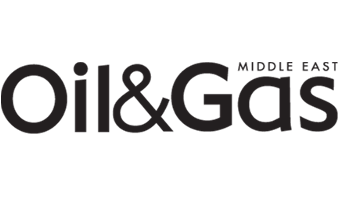Refinery and petrochemical operators have always been relying on production systems to ensure smooth, stable and safe production operations. As today’s global regulations are getting increasingly stringent, the production technologies in tandem with the monitoring and optimisation tools have had to evolve also. However, the downstream sector is known to be one of the most conservative industries and it is not a rare occurrence to see production teams struggle to convince top management to invest in modernizing the digital capabilities of their production assets.
Nevertheless, the world is undertaking an energy transition on a scale that is still immeasurable, and what is clear to all involved is that the work that needs to be achieved is massive and simply cannot be handled and navigated by legacy systems and mindsets.
Often, increasing the digital capability of production plants is called a ‘transformation journey’, as it is considered a long-term investment, that requires planning, enhanced understanding of the matter and closer relations between all refinery teams.
The teams must define the initial concept, develop new KPIs which embrace new digital technologies, and set clear goals for the future. Agreeing and adapting identical mindsets and structured methodologies are two fundamental aspects for properly defining the road map that companies will follow during the transformation journey. This involves creating new procedures and adapting to new technology pathways.
The most common questions that arise include “Why must we go through this, why we have to perform a digital transformation, why do we have to spend so much time, dedicate teams and take new people on board?”. There are many possible answers to these questions, but at the core, implementing new digital tools is an important step to reduce emissions, increase production flexibility, get higher conversion rates and achieve finer molecular management in order to produce more valuable products – while at the same time lowering energy and catalyst consumption. Unlocking enhanced production assets functionality is possible only when operators know exactly where and what happens in real time.
These digital tools cover a wide range of functions; advanced analytics and machine learning, augmented reality (AR), virtual reality (VR), blockchain technology, cloud computing, digital twins, industrial internet of things (IIoT), and remote monitoring amongst others.
Advanced Analytics and Machine Learning
The main role of these tools is to analyse large volumes of refinery data gathered from different smart sensors, distribution control systems, and making comparisons with previous production database records – this allows operators to identify unit behavior patterns. Adopting advanced analytics coupled with machine learning techniques enable operators to optimise daily operations, evaluating when predictive maintenance works should occur, and further unlocking the potential for enhanced assets performance.
Augmented Reality (AR) and Virtual Reality (VR)
AR and VR technologies in refineries are mainly applicable for production and maintenance trainings, as well as for creating and emulating safety procedures. These technologies provide an immersive experience for the operators and technicians, enabling them to visualize complex production systems, conduct virtual trainings for onsite inspections. AR also finds application when young engineers need real-time remote guidance from senior supervisors.
Blockchain Technology
The main role of this technology is to increase the supply chain transparency and ease feedstock traceability. It also can support secure supply of feedstock and distribution of end products. Another application is to enhance credibility and allow smart authentication of documentation and contracts.
Digital Twins
In the refining industry, digital twins act as a virtual replication of the physical production assets and peripheral systems. Such tools are created in order to simulate the exact physical processes in a safe virtual environment, where operators can adjust processes and simulate different production regimes. Digital twins play an important role within the downstream R&D, since while experimenting with different refinery values such as crude parameters, temperatures, pressures, catalysts and production flows, the twin does not reflect on the actual production while is allowing to compare different scenarios and unit behaviors.
Industrial Internet of Things (IIoT)
By IIoT in refineries, we have in mind the ability for different downstream equipment to be interconnected and being online, allowing them to read and gather production data in real-time. The comfort of immediately receiving production updates from remote sensors and smart metering gauges, enable operators to push the boundaries of their units, while maintaining optimal operational efficiency, achieving reduced downtimes during maintenance operations and also leads to enhanced safety of the production processes.
Remote Monitoring and Control
These systems are an essential part of the IIoT revolution since they enable refinery operators to monitor production in real-time and make unit adjustments from remote locations, usually from the control centers. Such capabilities to control and optimise static, rotating and fired equipment provide operators with exceptional operational flexibility allowing them to reduce costs, and is also an essential safety feature, notably during incidents -by minimising the need for people on-site during unpredictable critical moments.
Implementing new digital tools and strategies to support downstream transformation projects, can help operators to continually improve and advance their existing assets, allowing for deeper integration with new assets, meet production targets and achieve better overall results – this is of prime importance in today’s market where each drop of crude oil molecules matters for the global energy supply and climate goals.

